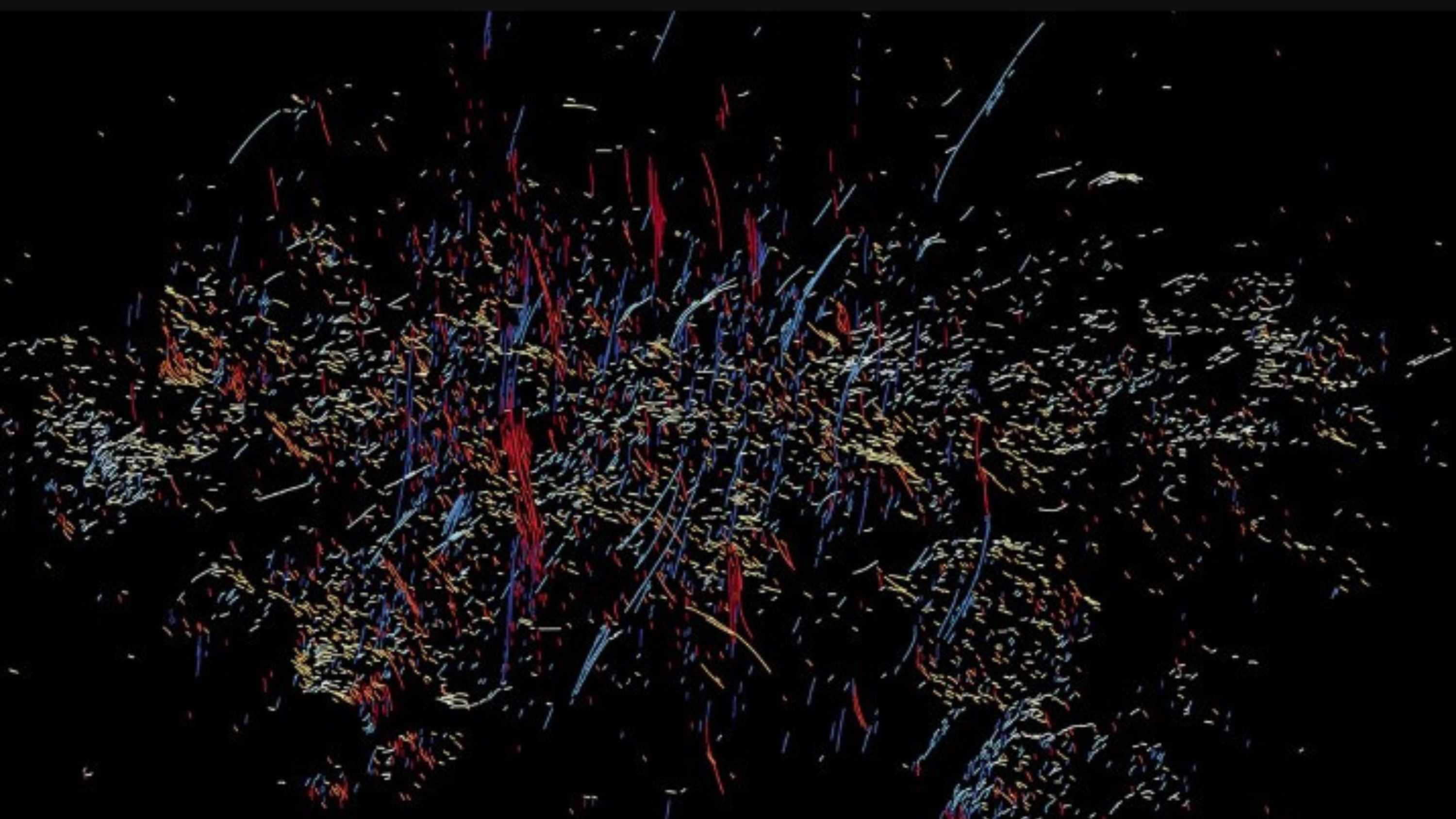(CNN) — An international team of astrophysicists has discovered hundreds of mysterious structures at the center of the Milky Way.
These one-dimensional cosmic threads are hundreds of horizontal or radial filaments, thin, elongated bodies of glowing gas that may have formed a few million years ago as they exited the Milky Way’s central supermassive black hole, Sagittarius A*, and interacted with surrounding material. According to a study published Friday In Astrophysical Journal Letters.
The length of the filaments is relatively short. 5 to 10 light years each.
The findings come nearly 40 years after the study’s lead author, Farhad Yousef-Zadeh, and other researchers discovered another population of nearly 1,000 large, upright, one-dimensional filaments, each up to 150 light-years away, near the center of the Sun. of the galaxy.
Youssef-Zadeh and his collaborators found hundreds of pairs and clusters of vertical filaments in the same region in 2022, realizing that the filaments may be related to Sagittarius A* activity and not supernova explosions as previously thought. The new study reinforces and extends previous findings.
Youssef-Zadeh, a professor of physics and astronomy at Northwestern University’s Weinberg College of Arts and Sciences, said in a news release that the discovery of “a new population of structures that appear to point in the direction of the black hole” was surprising. .
An image from the South African Radio Astronomy Observatory’s Meerkat telescope shows the mysterious filaments at the center of the Milky Way. (Credit: Northwestern University)
“The truth is, I was stunned when I saw them. We had to do a lot of work to check that we weren’t fooling ourselves,” said Youssef-Zadeh, who is also a member of the Center for Interdisciplinary Research and Studies in Astrophysics. “We found that these filaments are not random, but tied to the outflow from our black hole… It is satisfying when one sees order in the midst of a chaotic field at the center of our galaxy.”
The discoveries about the black hole, located about 26,000 light-years from Earth, are “truly amazing” and “show how beautiful the universe is,” said Erica Hamden, assistant professor of astronomy at the University of Arizona. Study, study.
Sagittarius A* “is the closest black hole to us, but it’s relatively quiet, so it’s somewhat difficult to actually study,” Hamden added. “But this work provides evidence that some energy has recently been captured in space in the form of a jet and a cone-shaped outflow.”
More information about the Milky Way
The researchers discovered the structures by analyzing images produced by the South African Radio Astronomy Observatory’s Meerkat telescope, which includes 64 satellite dishes each nearly 20 meters high and 8 kilometers apart in a sparsely populated area.
“The new MeerKAT observations are a game changer,” says Youssef-Zadeh. “This is really a technical achievement for radio astronomers.”
Despite the similarities between the newly discovered fibers and those identified in 1984, the authors of the new study do not believe the populations share the same characteristics.
The vertical filaments lie in a line perpendicular to the plane of the galaxy, while the horizontal ones are parallel to the plane and point radially toward the black hole, according to the press release. Vertical filaments wrap around the center of the Milky Way.
“The distribution and alignment of the fibers can help show how the material moved and deformed in the past,” Hamden said.
Their behavior also differs: horizontal filaments emit thermal radiation and material associated with molecular clouds partially or fully embedded in the black hole’s outflow, the authors wrote. Molecular clouds are made up of gas, dust and stars. Vertical filaments, on the other hand, are magnetic and contain cosmic ray electrons moving at the speed of light.




:quality(85)/cloudfront-us-east-1.images.arcpublishing.com/infobae/GSUTII4MN5DDHNXZSPOCPFRF6M.jpg)
:quality(85)//cloudfront-us-east-1.images.arcpublishing.com/infobae/GELW3OVM7NI25PUAWEXMVNQH54.jpg)